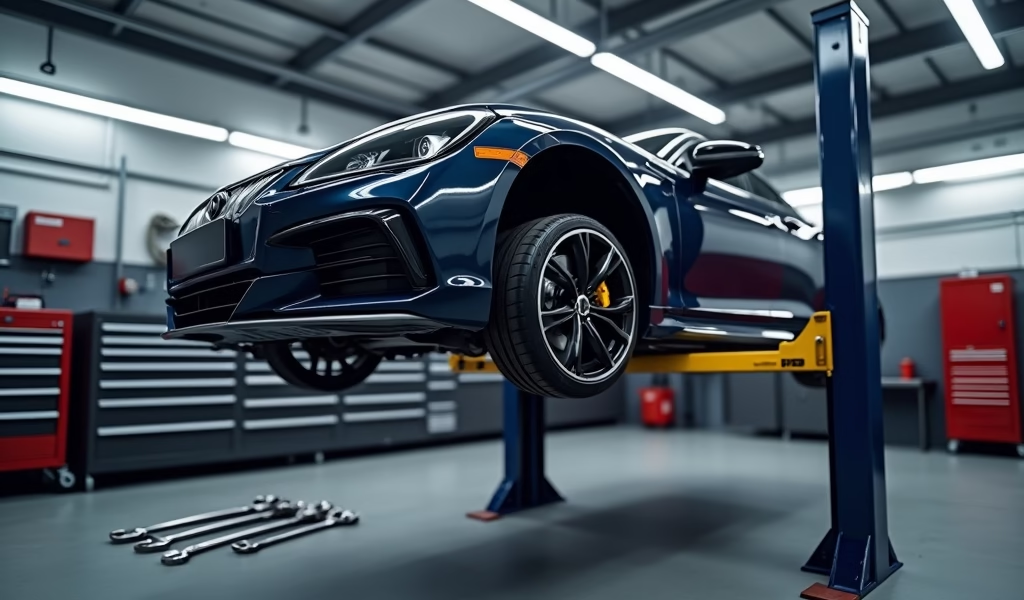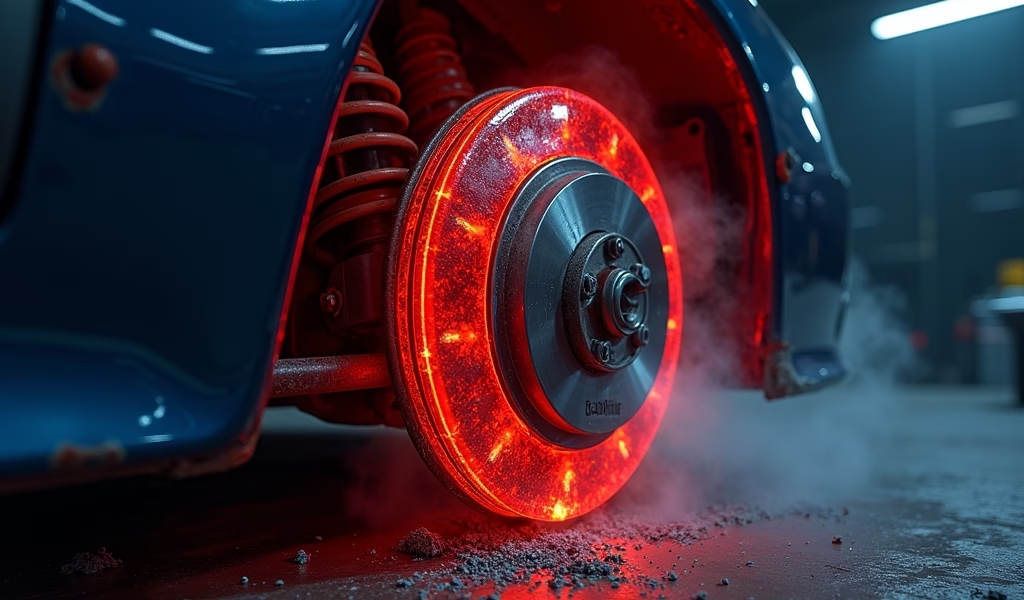Overview
This article identifies five critical brake cooling duct installation problems: improper positioning, inadequate mounting, incorrect sizing, poor routing, and sealing issues, while providing detailed solutions for each. Proper brake cooling duct installation maintains consistent braking performance, extends component life, and enhances safety during aggressive driving by reducing heat buildup that causes brake fade.
Table of Contents
- Understanding Brake Cooling: Why It Matters
- Common Installation Problem #1: Improper Duct Positioning
- Common Installation Problem #2: Inadequate Mounting
- Common Installation Problem #3: Incorrect Duct Sizing
- Common Installation Problem #4: Poor Routing
- Common Installation Problem #5: Sealing and Connection Issues
- DIY Installation Tips for Success
- Conclusion
- Frequently Asked Questions
Let’s talk brakes. Not just any brakes – hot, overworked brakes that are begging for some cool air. If you’re pushing your vehicle hard, whether on track days or winding mountain roads, proper brake cooling isn’t just nice to have – it’s essential. I’ve spent two decades working on performance vehicles, and I can tell you that brake cooling duct installation is one of those modifications that separates the amateurs from the pros.
When brakes overheat, they fade. When they fade, your stopping power diminishes dramatically. It’s as simple – and as terrifying – as that. But here’s the good news: with proper brake cooling ducts, you can significantly extend the life and performance of your braking system, even under extreme conditions.
In this guide, I’ll walk you through the five most common brake cooling duct installation issues I see in my shop weekly – and exactly how to fix them. Let’s dive in and give your brakes the breathing room they deserve.
Understanding Brake Cooling: Why It Matters
Before we jump into fixes, let’s quickly cover the basics. Your brakes convert kinetic energy (motion) into thermal energy (heat) through friction. During aggressive driving, this heat builds up rapidly – I’ve measured rotors exceeding 1,000°F after just a few hard stops. That’s hot enough to warp metal and boil brake fluid!
Proper brake cooling isn’t just about preventing overheating. It delivers tangible benefits you’ll feel immediately behind the wheel, including:
- Consistent brake pedal feel throughout long driving sessions
- Reduced stopping distances even after repeated hard braking
- Extended component life (pads, rotors, and even calipers)
- Prevention of brake fluid boiling (which causes complete brake failure)
- Improved lap times for track enthusiasts
How do you know if your brakes need additional cooling? Watch for these warning signs:
- Soft or spongy brake pedal after repeated use
- Blue or straw-colored discoloration on your brake disc ventilation surface
- Burning smell after aggressive driving
- Premature pad wear (especially on the leading edge)
- Warped rotors requiring replacement
Modern brake fade research shows that even a 100°F reduction in operating temperature can double pad life and significantly improve braking performance. That’s exactly what properly installed cooling ducts provide.

Common Installation Problem #1: Improper Duct Positioning
The positioning of your brake cooling ducts is arguably the most critical aspect of the entire system. I can’t count how many times I’ve seen DIY setups with ducts pointed in the wrong direction or located in low-pressure areas. It’s like trying to breathe through a straw that’s pointed away from your mouth – frustrating and ineffective.
For optimal cooling, your ducts should capture air from high-pressure zones at the front of the vehicle. Many performance cars have natural air channels behind the front fascia or between components that create perfect intake opportunities. The duct opening should face directly into the airstream to create a ram-air effect.
Here’s how to fix positioning issues:
- Identify high-pressure areas at the front of your vehicle (typically behind the front fascia, inside wheel wells, or under the front splitter)
- Position intakes to face directly into the oncoming airflow
- Ensure the duct output targets the rotor’s swept area (where the pad contacts the rotor)
- Avoid interference with suspension components through their full range of motion
A simple but effective test: On a windless day, use a smoke pen near potential intake locations with the vehicle stationary. Areas where the smoke is quickly pulled in (rather than lingering) indicate natural low-pressure zones – ideal for positioning your ducts.
For track-focused applications, consider backing plates that direct air across the entire face of the rotor. These create a more consistent cooling effect than simple point-source ducts and help maintain even temperatures across the rotor surface.
Common Installation Problem #2: Inadequate Mounting
Nothing undermines a brake cooling system faster than ducts that vibrate, shift, or completely detach during operation. The high-vibration environment of a performance vehicle creates unique challenges for mounting brake ducts. I’ve seen too many zip-tied specials come into my shop hanging by a thread.
Proper mounting requires automotive-grade hardware designed for high-vibration environments. Your mounting solution must withstand not just normal driving forces but also occasional impacts from road debris.
Here’s my approach to bulletproof mounting:
- Use stainless steel brackets with vibration-dampening rubber isolators
- Implement redundant mounting points (primary and backup)
- Choose locking nuts with nylon inserts that won’t vibrate loose
- Apply thread-locking compound on all threaded fasteners
- Secure flexible sections with high-quality stainless hose clamps
- Create mounting points that distribute force rather than concentrating it
For professional-grade installations, I recommend fabricating custom mounting brackets from aluminum or stainless steel. These can be designed to utilize existing mounting points on the vehicle, eliminating the need for drilling or cutting.
Remember to account for thermal expansion in your mounting design. Rigid mounting at both ends of a duct can lead to cracking or separation as components heat up and expand at different rates. I typically secure one end firmly while allowing the other slight movement within controlled parameters.
Common Installation Problem #3: Incorrect Duct Sizing
When it comes to brake cooling ducts, size matters – but bigger isn’t always better. This is where many enthusiasts go wrong, often assuming that maximum airflow requires maximum diameter. In reality, duct sizing is a careful balance between flow capacity, vehicle aerodynamics, and installation constraints.
Undersized ducts restrict airflow, creating a bottleneck in your cooling system. Conversely, oversized ducts can create unnecessary drag, add excess weight, and sometimes even disrupt the aerodynamic balance of performance vehicles.
How do you determine the right size? Here’s my approach:
- For most street performance applications, 2-3 inch diameter ducts provide an excellent balance
- Track-focused cars benefit from 3-4 inch ducts in most cases
- Consider your vehicle weight (heavier vehicles generate more heat)
- Factor in your typical driving style (track days versus spirited street driving)
- Account for the available installation space in your specific vehicle
Don’t forget about rotor hat height measurements when determining your duct size and placement. The hat section of your rotor affects airflow patterns across the rotor surface.
An elegant solution for some vehicles is using a tapered duct system that starts larger at the intake (capturing maximum air) and gradually narrows toward the rotor (increasing velocity). This creates a venturi effect that can actually increase airflow velocity at the rotor face, enhancing cooling efficiency.
For scientific validation, SAE International studies have shown that optimized duct sizing can reduce brake temperatures by 15-20% compared to improper sizing, even with identical mounting locations.
Common Installation Problem #4: Poor Routing
Even perfectly sized and positioned ducts will underperform if their path to the brakes resembles a maze rather than a highway. The path your ducts take matters tremendously, and it’s where many DIY installations fall short.
Air follows the path of least resistance. Every bend, kink, or unnecessary detour creates resistance, reducing airflow and cooling efficiency. The physics is simple, but the application requires careful planning.
For optimal routing:
- Map your route before installation, identifying the most direct path possible
- Minimize the number of bends (each 90-degree bend can reduce airflow by up to 15%)
- Use gentle curves rather than sharp angles when bends are necessary
- Maintain consistent diameter throughout the system (no pinch points)
- Keep ducts away from heat sources like exhaust components
- Protect exposed sections from road debris with strategic shields or positioning
One often-overlooked aspect of routing is accounting for suspension travel and steering movement. Your perfectly routed duct might work great with the wheels pointing straight ahead, but what happens during full steering lock? I always verify clearance throughout the full range of suspension compression and steering angles.
Consider the brake line routing specifications when planning your duct path. Often you can follow similar routes, as factory engineers have already identified safe pathways through crowded engine bays and suspension components.
For the best results, use mandrel-bent aluminum tubing for rigid sections of your ducting. Unlike flexible hose, which can collapse under vacuum or when bent too sharply, aluminum tubing maintains its shape and internal diameter regardless of conditions.

Common Installation Problem #5: Sealing and Connection Issues
The final common pitfall in brake cooling duct installations is poor sealing. Even small gaps at connection points can result in significant pressure loss, especially at high speeds when you need cooling performance most.
The physics of fluid dynamics means that even tiny leaks can disproportionately impact overall system efficiency. Think about it like this: If you’re trying to drink through a straw with a small hole, you’ll get much less liquid than you’d expect – the air takes the path of least resistance through the hole rather than pulling up your drink.
For perfect sealing:
- Use high-quality silicone couplers at connection points
- Apply automotive-grade hose clamps (not cheap hardware store versions)
- Consider heat-shrink tubing for irregular connections
- Use high-temperature RTV silicone for custom sealing applications
- Implement transition adapters where components of different diameters meet
When troubleshooting air leaks, try this simple smoke test: With the ducts fully connected, blow smoke into the system while blocking the exit. Any leaks will be immediately visible as smoke escapes through gaps.
For flexible duct sections, I strongly recommend spiral-wound and wire-reinforced materials that maintain their shape under vacuum conditions. Cheaper alternatives can collapse during high-airflow situations, creating unexpected restrictions when your cooling system is working hardest.
According to tire and brake experts, properly sealed brake cooling systems can maintain up to 30% more airflow volume than systems with connection leaks, even when all other factors are identical.
DIY Installation Tips for Success
Ready to tackle your brake cooling duct installation? Here are my top tips to ensure your project succeeds:
Essential Tools:
- Quality utility knife with replaceable blades
- Heat gun for reshaping ducts
- Step drill bit set for clean mounting holes
- Digital thermometer for before/after testing
- Assortment of stainless hose clamps
- Locking pliers and wire cutters
- Thread-locking compound
The Step-by-Step Process:
- Start with research – document your specific vehicle’s airflow characteristics
- Create a full mock-up before cutting anything
- Mount intake scoops first, ensuring proper alignment with airflow
- Run the main duct sections, creating as direct a path as possible
- Connect to brake components, ensuring proper positioning at the rotor
- Secure all connection points with appropriate clamps
- Test the system under actual driving conditions
For performance validation, conduct temperature testing before and after installation. Use an infrared thermometer to measure rotor temperatures after identical brake applications from the same speed. A properly installed cooling system should show a significant temperature reduction.
Don’t forget to check all connections after your first test drive. Vibration and heat can cause components to shift or loosen, particularly with new installations that haven’t “settled in” yet. A quick inspection can prevent bigger issues down the road.
If your budget allows, consider investing in thermal imaging for the ultimate in brake temperature analysis. These cameras can reveal hot spots and uneven cooling that might not be apparent to the naked eye or even with spot temperature measurements.
Conclusion
Properly installed brake cooling ducts represent one of the most effective performance and safety upgrades you can make to any vehicle that sees spirited driving. By avoiding the five common installation pitfalls we’ve discussed – improper positioning, inadequate mounting, incorrect sizing, poor routing, and sealing issues – you’ll create a system that delivers consistent, reliable brake performance under all conditions.
Remember that brake cooling isn’t just about preventing failure; it’s about creating consistency. When your brakes perform identically on lap one and lap twenty of a track day, you’ve achieved something special – the confidence to push your limits safely.
For everyday driving, you’ll appreciate the longer component life, more consistent pedal feel, and added safety margin that comes with properly cooled brakes. It’s an upgrade that pays for itself in reduced maintenance costs alone, not to mention the priceless value of improved safety.
Ready to transform your vehicle’s braking performance? Whether you tackle this project yourself or bring your vehicle to a professional shop, addressing your brake cooling needs will deliver immediate, tangible benefits you’ll feel with every press of the pedal.
Need specific advice for your vehicle? Drop us a line at info@knowsyourcar.com or call us at 555-KNOWS-CAR. We’re passionate about helping enthusiasts like you implement effective modifications that enhance both safety and performance.
Frequently Asked Questions
How much do brake temperatures typically drop with proper cooling ducts?
Most vehicles see a 100-150°F reduction in brake temperatures with properly installed cooling ducts. This temperature drop significantly extends component life and maintains consistent brake performance.
Can I install brake cooling ducts on any vehicle?
Yes, virtually any vehicle can benefit from brake cooling ducts, though installation complexity varies by model. Modern vehicles with complex front fascias may require more creative solutions than older or purpose-built performance cars.
Will brake cooling ducts affect my vehicle’s aerodynamics?
Properly designed and positioned ducts have minimal impact on overall aerodynamics. Some high-performance designs actually incorporate brake cooling into the vehicle’s aerodynamic strategy for improved downforce.
How often should I inspect my brake cooling ducts?
Inspect your brake cooling ducts at least every oil change or before any track event. Check for debris blockage, connection security, and any damage from road hazards.
Are flexible or rigid ducts better for brake cooling?
Rigid ducts provide more consistent airflow but flexible sections are often necessary to navigate tight spaces. The ideal system uses rigid ducts for straight sections and high-quality flexible connections where movement is required.

